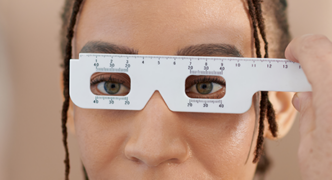
How to read your eyeglass prescription? When you look down at your eyeglass prescription, the numbers and the abbreviations staring up at you can be quite confusing.
Many others who also have trouble interpreting their prescription card share your puzzled expression. Can reading your eyeglass prescription be this hard? Once you know what the abbreviations stand for and what the numbers next to them mean, you will be able to decipher your prescription card.
1. Learn What The Different Abbreviations Stand For
O.D. or oculus dextrus refers to your right eye whereas O.S. or oculus sinister refers to your left eye. Another prescription term you need to familiarize yourself with is OU or oculus uterque, which refers to both eyes.
Some eye doctors have tried to modernize the manner in which they write an eye prescription, substituting the Latin terms for RE meaning right eye and LE meaning left eye. Which information comes first on the prescription card? The prescription card will state the results for your right eye first, and then the left eye.
2. Determining If You Are Farsighted Or Nearsighted
SPH determines the prescription power of each eye. This number allows the eye doctor to determine if you are farsighted or nearsighted. Negative numbers suggest you are nearsighted and positive numbers suggest you are farsighted.
Next to the number, a “-“and “+” sign will be written. Again, the “plus” sign indicates farsightedness and the “minus” sign indicates nearsightedness. If your sight is extremely poor, the number will be further away from the zero. The numbers represent diopters or the focusing power. Lenses are designed using diopters.
For Example: If the prescription states -1.00, you are nearsighted and have one diopter. If you are -4.25, you are nearsighted and have 1/4 and 4 diopter. The second result states that a person will require thicker lenses. For farsightedness, +1.00 equals a small amount whereas +5 indicates you will require thicker lenses.
3. Determining If You Have Cylindrical Vision
Does your prescription card have three numbers? If so, the eye doctor will diagnose you with astigmatism. The cylinder may have a minus or a plus sign next to it to indicate the severity of your astigmatism. If you find the letter “X” written on the prescription—a digit that is between 0 and 180—it stands for the astigmatism’s orientation.
For Example: If you have -1.00 plus 1.50 times 180, you are nearsighted, have astigmatism, and on an axis of 180 degrees. If you have +2.50 plus 2.00 times 45, you are farsightedness, have astigmatism, and on an axis of 45 degrees.
4. Learn To Differentiate Between The Five Types Of Eyeglass Prescription
Your prescription card will also inform you the type of eyeglass perception you require. There are five in total and they are:
- Single Vision– Single vision lenses correct astigmatisms, farsightedness, and nearsightedness. These lenses have the same or equal number of correction. People who require reading glasses need full frame lenses, but single frame lenses are also available. Single vision lenses are narrower and provide easier view of both far away and near objects.
- Bifocals– Another term for bifocals is lined bifocals. People who are farsighted and nearsighted require bifocals lenses to correct both problems. The lenses allow you to see objects at a close-up distance of 12 to 18 inches. For faraway object, the lenses allow you to see objects 10 feet and more. You can easily tell is someone is wearing bifocals by seeing the line on their lenses, indicating a separation of nearsighted and farsighted distance.
- Trifocals– Trifocals also known as lined trifocals have three prescriptions contained in one lens. The first Rx corrects nearsightedness, the middle corrects mid-way distances of about 18” to 20”, and the second corrects farsightedness.
- Progressives– Like trifocals, they also contain three prescriptions. The multifocal lenses contain near, middle, and far distance prescription. There is no visible line indicating the three prescriptions on them. The wearer does not have to focus on a specific line to see an object, located far or near. Instead, they receive a continuous experience looking from far away to near objects.
- Computer Glasses– Eye doctors prescribe these glasses to wearers who sit in front of a computer screen for most of the day. These types of lenses reduce the eyestrain glares from the computer screens cause. The lenses for the computer glasses provide people with a distance, ranging from 20” to 26.” Wearers can opt to coat their computer glasses to block the blue light emitting from the computer and other electronic devices.
Now, reading your eye prescription will be less of a challenge for you. If you want to order eyeglasses online, you will be able to fill out all the sections without any trouble. Additionally we have made it easier than ever before to provide your eyeglass prescription online, just upload, fax, email or text your prescription to us and we will take care of the rest.





























